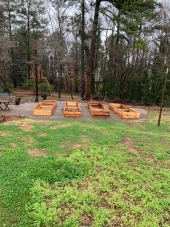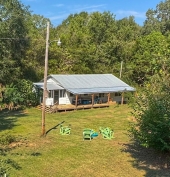




 2
2





 1
1




Works at a residential alternative high school in the Himalayas SECMOL.org . "Back home" is Cape Cod, E Coast USA.




"You must be the change you want to see in the world." "First they ignore you, then they laugh at you, then they fight you, then you win." --Mahatma Gandhi
"Preach the Gospel always, and if necessary, use words." --Francis of Assisi.
"Family farms work when the whole family works the farm." -- Adam Klaus
 4
4




Marianne
check us out @ www.cricketscove.net




Marianne Cicala wrote:We got a little creative with our high tunnel. 1st we opted for an 8' ceiling height to cut down on the labor & cost and to minimize the heat loss due to a high (14') ceiling level. We dug a ditch around the perimeter of 1 side, with several entries under the sill of the building and then the rain water runs into the hoop on that 1 side into another channel inside the hoop (a terraced bed adjoins that side of the hoop, to flow into the hoop). From there, the rain and run off (an enormous amount of rainwater runs off of the hoop house itself) goes into a channel, flows down the center of the hoop and into the keyhole beds. Our productivity is far greater than with traditional rows. The west facing inside of the hoop (we ran it North/South) is filled with large rocks to act a heat sink. We do not use artificial heat, but do use row covers inside the hoop if temps are going to get extremely low for us (below 15 degrees). Works really well. Y'day I seeded several beds with root crops, since we're getting so much braising mix, lettuces, spinach, arugula and cilantro that I need some new stuff. Hope this helps.
M.




Mike Hamilton wrote:
Marianne Cicala wrote:We got a little creative with our high tunnel. 1st we opted for an 8' ceiling height to cut down on the labor & cost and to minimize the heat loss due to a high (14') ceiling level. We dug a ditch around the perimeter of 1 side, with several entries under the sill of the building and then the rain water runs into the hoop on that 1 side into another channel inside the hoop (a terraced bed adjoins that side of the hoop, to flow into the hoop). From there, the rain and run off (an enormous amount of rainwater runs off of the hoop house itself) goes into a channel, flows down the center of the hoop and into the keyhole beds. Our productivity is far greater than with traditional rows. The west facing inside of the hoop (we ran it North/South) is filled with large rocks to act a heat sink. We do not use artificial heat, but do use row covers inside the hoop if temps are going to get extremely low for us (below 15 degrees). Works really well. Y'day I seeded several beds with root crops, since we're getting so much braising mix, lettuces, spinach, arugula and cilantro that I need some new stuff. Hope this helps.
M.
how well does the structure handle wind
up here in the Keweenaw of Michigan we get a lot of wind off the big lake [30-40 mph]
the way the beds are layed out are a great idea with the walk ways into the bed [key hole]
Mike




Mike Hamilton wrote:
how well does the structure handle wind
up here in the Keweenaw of Michigan we get a lot of wind off the big lake [30-40 mph]
the way the beds are layed out are a great idea with the walk ways into the bed [key hole]
Mike




Marianne Cicala wrote: Our productivity is far greater than with traditional rows.


|
I am not young enough to know everything. - Oscar Wilde This tiny ad thinks it knows more than Oscar:
Rocket Mass Heater Resources Wiki
https://permies.com/w/rmh-resources
|







